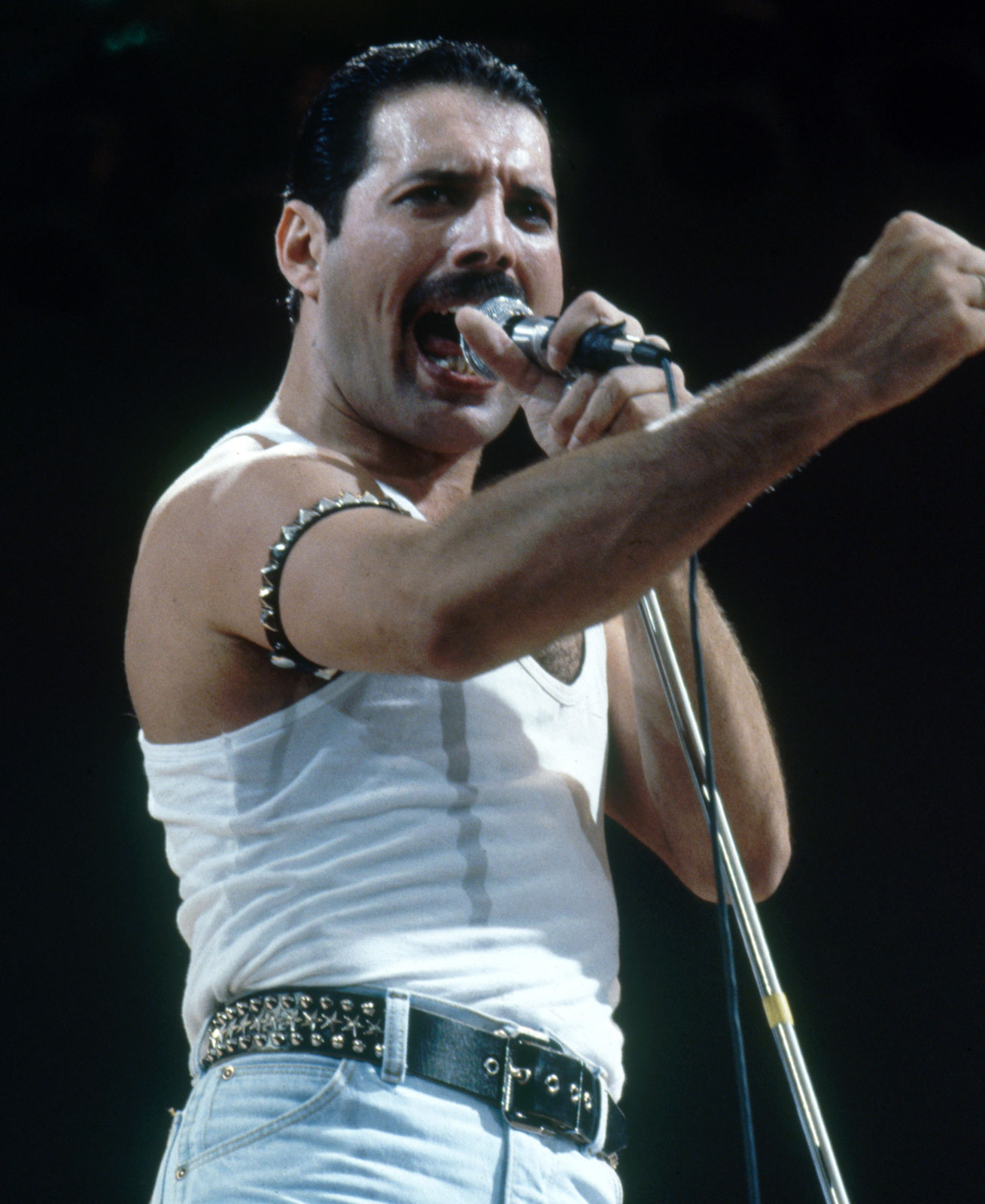What was Live Aid?
Live Aid was a massive benefit concert organized by Bob Geldof on July 13, 1985. The mission of the concert was to raise money for famine relief in Ethiopia and the event was held simultaneously at Wembley Stadium in London and JFK Stadium in Philadelphia. Artists featured included The Who, Black Sabbath, U2, and, of course, Queen, led by Freddie Mercury. Over 1.5 billion viewers watched on TV with an additional 72,000 people watching live in London. The remarkable 16-hour concert raised money for Ethiopia while allowing Freddie Mercury to take command of the stage and the audience in an unforgettable performance (Ray, 2021).
Freddie Mercury at Live Aid, July 13, 1985
“Freddie Mercury at Live Aid.” Live Aid, Encyclopædia Britannica, https://www.britannica.com/event/Live-Aid#/media/1/344562/236626.
Freddie Mercury’s Performance
On stage, Freddie Mercury was a flamboyant singer with an incomparable stage presence. However, his confidence and ability to command a crowd goes beyond his talent. Mercury’s microphone of choice was a Shure 565D. His decision to use this microphone in particular was beneficial due to the way that “the highs made the treble in [his] voice clearer and louder than other microphones… while retaining that flatness in the mid-range” (Stamp, 2020). This loudness that Shure delivered was further recognized by Roger Taylor, who cited their success to the fact that “We were louder than anyone else at Live Aid…You’ve got to overwhelm the crowd in a stadium!” (Jones, 16). Knowing that being loud was the key, Mercury could make no mistake in his choice of microphone. Known for its reliability and ability to produce the clearest, loudest sound for his vocal timbre, it was a no brainer to choose the 565SD. If he had been nervous about the microphone quality, he would not have been able to focus on his relationship with the audience both live and on television. In the video below, you can see how Mercury is able to use the loudness of his voice and clarity of the delivery to incite the entire crowd in a call and response. Without a clear voice heard all the way to the back of the crowd, the audience would not have been able to accurately respond to his call or be engaged in the same manner. He increased the crowd experience and “without technology to spread sound to the entire crowd, Freddie Mercury and Queen would not have been able to have the same impact on the people” (Inglis, 144).
My Fairy King, director. Freddie Mercury – Vocals With Crowd – Live Aid – 13 July 1985. Youtube, 15 Aug. 2013, https://www.youtube.com/watch?v=RFADm6jAfSA. Accessed 18 Apr. 2022.
Cultural Significance of Live Aid
The importance of sound being heard at Live Aid was driven primarily by the idea that Live Aid was an event that created a sense of community and shared human experience. With Queen being able to produce a successful performance in front of such a large crowd, they secured their place as one of the best, if not the best performance of the entire concert. This was especially crucial because “their popularity had slipped due to a plethora of miscalculations, mishaps, and a general, wide-sweeping change in musical tastes” (Jones, 18). This Live Aid performance allowed them to regain the respect and popularity that had slipped and reposition them in the music world. As opposed to the negative media that they had previously received, Howard Jones remarked that “Whether you like their music or not, you couldn’t deny that it was just one of the best performances ever that anyone had done anywhere, ever” (Inglis, 145). With this performance, they changed the direction of their band and drew listeners from all over the world. Not only did this improve their own image and reputation going forward, but promoted an amazing cause and raising money for those in need.
To sum up Live Aid and Queen’s performance in one word- memorable. The sheer length of the event as a whole was revolutionary, as was the sound that Queen produced. It is cited that Queen’s performance was so memorable because “there were no technical difficulties which plagued some of the other performances. Queen’s performance was clearly part of the ‘triumph of technology’ of the day, in terms of both their musicianship and the equipment used to transmit it” (Inglis, 143). Here, we solidify the importance of the Shure microphone for Mercury. No amount of stage presence or passion can make up for faulty technology or a too-soft microphone. The Shure 565SD allowed for their success, memorability, and reputation as the best.